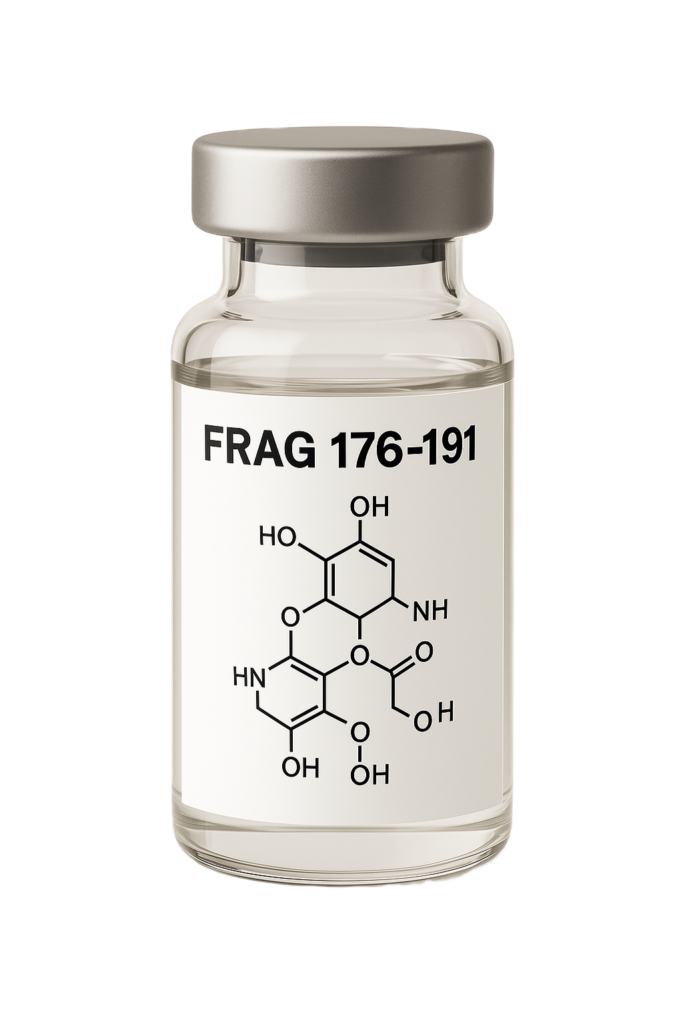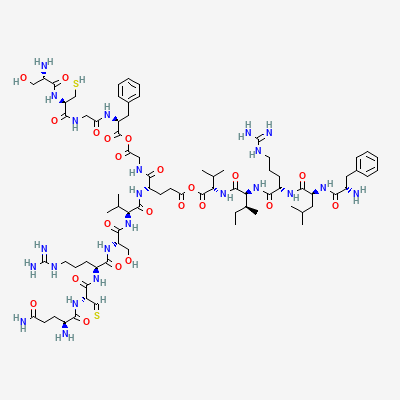Frag 176-191
Metabolic disorders
Lipodystrophy
Adjunct therapy in weight loss programs
HGH Fragment 176-191 is a synthetic peptide derived from the C-terminal end of the human growth hormone (hGH) molecule. It encompasses amino acids 176 to 191 and is studied for its potential lipolytic (fat-reducing) properties without the proliferative effects associated with full-length hGH.
Mechanism of action
This fragment is believed to stimulate lipolysis by enhancing the activity of beta-3 adrenergic receptors (β3-AR) on adipocytes, leading to increased fat breakdown. Unlike full-length hGH, it does not significantly influence insulin-like growth factor 1 (IGF-1) levels, thereby minimizing potential anabolic and diabetogenic effects.
Notable Studies
Preclinical studies have demonstrated that HGH Fragment 176-191 can reduce body fat in obese animal models without affecting food intake. It has also been observed to increase lipolytic activity in human adipose tissue samples.
Risk Associated
While HGH Fragment 176-191 has shown promise in preclinical studies, its safety and efficacy in humans remain under investigation. Potential risks include:
Unknown long-term effects
Possible alterations in glucose metabolism
Lack of regulatory approval for human use
Dosage
Common research dosages range from 250 to 500 micrograms administered subcutaneously, typically once or twice daily. Dosing protocols may vary based on specific research objectives.
External link


Frag 176-191
Metabolic disorders
Lipodystrophy
Adjunct therapy in weight loss programs
Mechanism of action
This fragment is believed to stimulate lipolysis by enhancing the activity of beta-3 adrenergic receptors (β3-AR) on adipocytes, leading to increased fat breakdown. Unlike full-length hGH, it does not significantly influence insulin-like growth factor 1 (IGF-1) levels, thereby minimizing potential anabolic and diabetogenic effects.
Risk
Associated
While HGH Fragment 176-191 has shown promise in preclinical studies, its safety and efficacy in humans remain under investigation. Potential risks include:
Unknown long-term effects
Possible alterations in glucose metabolism
Lack of regulatory approval for human use
Notable Studies
Preclinical studies have demonstrated that HGH Fragment 176-191 can reduce body fat in obese animal models without affecting food intake. It has also been observed to increase lipolytic activity in human adipose tissue samples.
Dosage
Common research dosages range from 250 to 500 micrograms administered subcutaneously, typically once or twice daily. Dosing protocols may vary based on specific research objectives.
External link
Frag 176-191
Metabolic disorders
Lipodystrophy
Adjunct therapy in weight loss programs
Mechanism of action
This fragment is believed to stimulate lipolysis by enhancing the activity of beta-3 adrenergic receptors (β3-AR) on adipocytes, leading to increased fat breakdown. Unlike full-length hGH, it does not significantly influence insulin-like growth factor 1 (IGF-1) levels, thereby minimizing potential anabolic and diabetogenic effects.

Risk
Associated
While HGH Fragment 176-191 has shown promise in preclinical studies, its safety and efficacy in humans remain under investigation. Potential risks include:
Unknown long-term effects
Possible alterations in glucose metabolism
Lack of regulatory approval for human use
Notable Studies
Preclinical studies have demonstrated that HGH Fragment 176-191 can reduce body fat in obese animal models without affecting food intake. It has also been observed to increase lipolytic activity in human adipose tissue samples.
Dosage
Common research dosages range from 250 to 500 micrograms administered subcutaneously, typically once or twice daily. Dosing protocols may vary based on specific research objectives.
External link
-
Heffernan MA, et al. Effects of oral administration of a synthetic fragment of human growth hormone on lipid metabolism in rodent models of obesity and in human adipose tissue. Int J Obes Relat Metab Disord. 2001;25(10):1442-9.
-
Core Peptides. Frag 176-191 Peptide: Metabolic Modulation and Regenerative Potential.
-
The Catalyst Clinic. HGH Fragment 176-191: Fat Loss & Anti-Aging Peptide.
-
Fortex Pharma. HGH Fragment 176-191.
-
Wikipedia contributors. HGH Fragment 176–191. Wikipedia, The Free Encyclopedia.